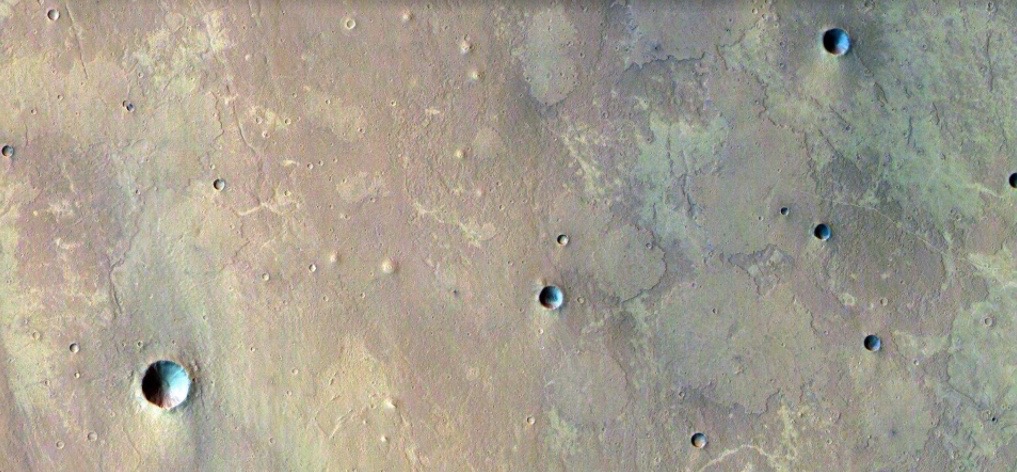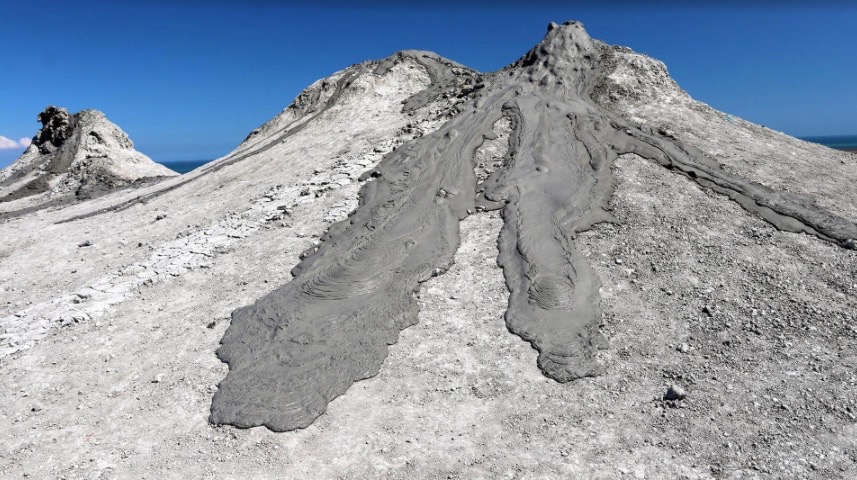Mud volcanoes may spew on Mars, scientists say

Mars may sport two different types of volcanoes, just like Earth.
The Red Planet has had plenty of "normal" lava-spewing volcanoes, one of which created the biggest mountain in the solar system: the 16-mile-high (25 kilometers) monster Olympus Mons. But some Mars volcanoes may erupt with mud rather than molten rock, a new study suggests.
Mars' northern hemisphere is dotted with tens of thousands of conical hills, some of which are topped with small craters. Some researchers have postulated that these features were created by mud volcanoes, but this hypothesis has been hard to assess. Scientists just don't know enough about how mud moves on the Red Planet, which is very cold and has an atmospheric pressure 150 times lower than that of Earth.
Related: Mars volcano views revealed by spacecraft (photos)
That's where the new study comes in. Researchers sent mud flowing down a sandy slope in a laboratory chamber that mimicked Mars conditions (except the Red Planet's gravity, which is just 40% as strong as Earth's).
The results were surprising, study team members said.
"Under the low atmospheric pressure of Mars, the mud flows behave in much the same way as 'pāhoehoe,' or 'ropy,' lava, which is familiar from large volcanoes on Hawaii and Iceland," lead author Petr Brož, of the Czech Academy of Sciences, said in a statement.
Breaking space news, the latest updates on rocket launches, skywatching events and more!
"Our experiments show that even a process as apparently simple as the flow of mud — something that many of us have experienced for ourselves since we were children — would be very different on Mars," Brož said.
The pāhoehoe-like behavior is driven largely by Mars' low pressure, which cannot support the existence of liquid surface water for long. As the water evaporates, it absorbs heat and cools the remaining mud. The mud freezes from the outside in, forming a crust around a gooey center, study team members. The unfrozen mud on the interior can break through the crust, forming a new lobe.
The new results don't conclusively demonstrate that Mars' northern hills are mud volcanoes. But they do bolster that interpretation, showing that such geological activity is possible on the Red Planet, study team members said.

And this information should be kept in mind when trying to understand geological features on worlds beyond Earth, they added.
"Once again, it turns out that different physical conditions must always be taken into account when looking at apparently simple surface features on other planets," study co-author Ernst Hauber, of the DLR Institute of Planetary Research in Berlin, said in the same statement. (DLR is the German acronym for the German Aerospace Center.) "We now know that we need to consider both mud and lava when analyzing certain flow phenomena."
Mud volcanoes could potentially be active today on Mars, as they are on Earth. After all, the Red Planet is thought to harbor large reservoirs of subsurface water, including, perhaps, a giant lake beneath its south pole.
The new study was published online today (May 18) in the journal Nature Geoscience.
- Weird volcanoes are erupting across the solar system
- 7 biggest mysteries of Mars
- An explosive volcano on Mars may have spawned this strange rock billions of years ago
Mike Wall is the author of "Out There" (Grand Central Publishing, 2018; illustrated by Karl Tate), a book about the search for alien life. Follow him on Twitter @michaeldwall. Follow us on Twitter @Spacedotcom or Facebook.
OFFER: Save 45% on 'All About Space' 'How it Works' and 'All About History'!
For a limited time, you can take out a digital subscription to any of our best-selling science magazines for just $2.38 per month, or 45% off the standard price for the first three months.

Michael Wall is a Senior Space Writer with Space.com and joined the team in 2010. He primarily covers exoplanets, spaceflight and military space, but has been known to dabble in the space art beat. His book about the search for alien life, "Out There," was published on Nov. 13, 2018. Before becoming a science writer, Michael worked as a herpetologist and wildlife biologist. He has a Ph.D. in evolutionary biology from the University of Sydney, Australia, a bachelor's degree from the University of Arizona, and a graduate certificate in science writing from the University of California, Santa Cruz. To find out what his latest project is, you can follow Michael on Twitter.

